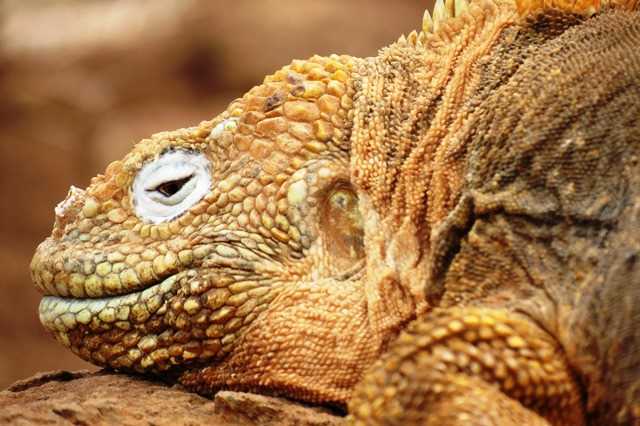On our first morning in the Galápagos, we woke up anchored already by North Seymour, a small, flat island north of Baltra Airport. Although tiny, this island is considered one of the jewels of the crown in Galápagos, due to the amount of wildlife one can encounter here. We set foot on its rocky shores and continued along an inland trail, in order to look for the resident colony of magnificent and great frigatebirds; with a tarnished reputation, these amazing seabirds are known to be the “pirates of the air” as they steal food fished by other birds. We had the chance to see frigates at every stage of their reproductive cycle: from attractive males with their gular red pouches fully inflated, to the juvenile frigates still sitting on the nests where they hatched, waiting for their mothers to return to feed them. Not far from them were the blue-footed boobies, one of the most charismatic species of the Enchanted Isles. All along the trail we found juvenile boobies, the product of what seems to be a very successful breeding season. We even saw an adult booby looking after two tiny chicks, so young that they were not even covered by dawn. North Seymour is also inhabited by a healthy colony of land iguanas; these beautiful creatures add vibrant colour to an otherwise dull landscape. The Galápagos are a dry archipelago, and much of the local vegetation is deciduous; without their foliage, trees looked naked and gray, retaining just enough moisture to withstand the long draught.
By midday we had weighed anchor and were navigating towards Rábida Island. Just south of Santiago and in the heart of the archipelago, it certainly looked different to North Seymour, thanks to its reddish lavas produced by the rusting of the iron contained in them. At Rábida we snorkeled to explore its underwater world: the waters were on the cold side but the visibility was good, so we were able to observe large schools of various fish species, as well as a couple of white-tipped reef sharks and Pacific green sea turtles. By the end of the afternoon we had set foot on the red beach of Rábida to do a short excursion; various landbird species accompanied us along the trail, like the Darwin finches, Galápagos doves and mockingbirds. The sun set behind the silhouettes of Isabela volcanoes: not every day one can see the summits of the five major volcanoes that form the largest island of the archipelago… it was a marvelous sight, a promise that more spectacular moments await us this week.







